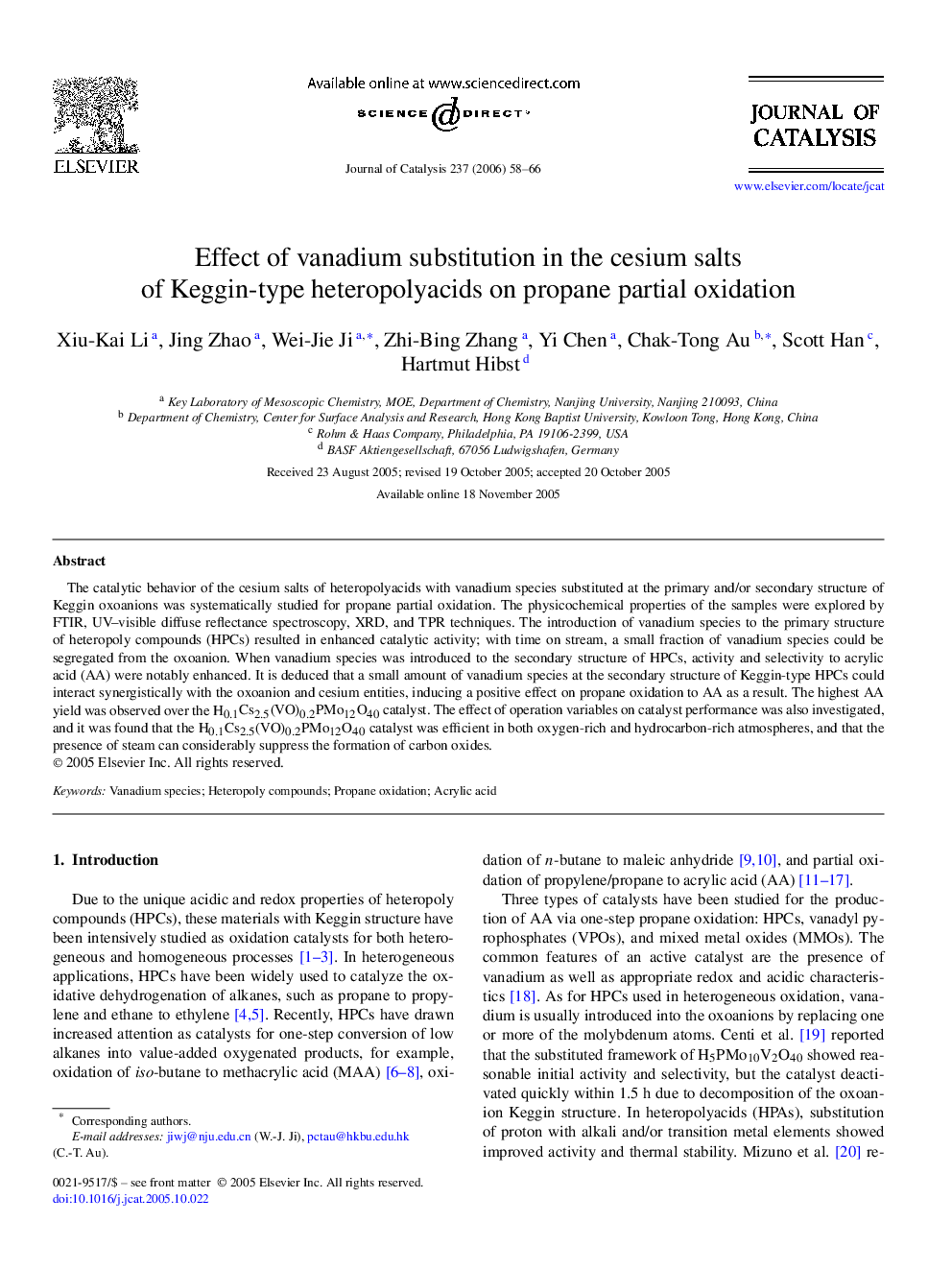| Article ID | Journal | Published Year | Pages | File Type |
|---|---|---|---|---|
| 63415 | Journal of Catalysis | 2006 | 9 Pages |
The catalytic behavior of the cesium salts of heteropolyacids with vanadium species substituted at the primary and/or secondary structure of Keggin oxoanions was systematically studied for propane partial oxidation. The physicochemical properties of the samples were explored by FTIR, UV–visible diffuse reflectance spectroscopy, XRD, and TPR techniques. The introduction of vanadium species to the primary structure of heteropoly compounds (HPCs) resulted in enhanced catalytic activity; with time on stream, a small fraction of vanadium species could be segregated from the oxoanion. When vanadium species was introduced to the secondary structure of HPCs, activity and selectivity to acrylic acid (AA) were notably enhanced. It is deduced that a small amount of vanadium species at the secondary structure of Keggin-type HPCs could interact synergistically with the oxoanion and cesium entities, inducing a positive effect on propane oxidation to AA as a result. The highest AA yield was observed over the H0.1Cs2.5(VO)0.2PMo12O40 catalyst. The effect of operation variables on catalyst performance was also investigated, and it was found that the H0.1Cs2.5(VO)0.2PMo12O40 catalyst was efficient in both oxygen-rich and hydrocarbon-rich atmospheres, and that the presence of steam can considerably suppress the formation of carbon oxides.
